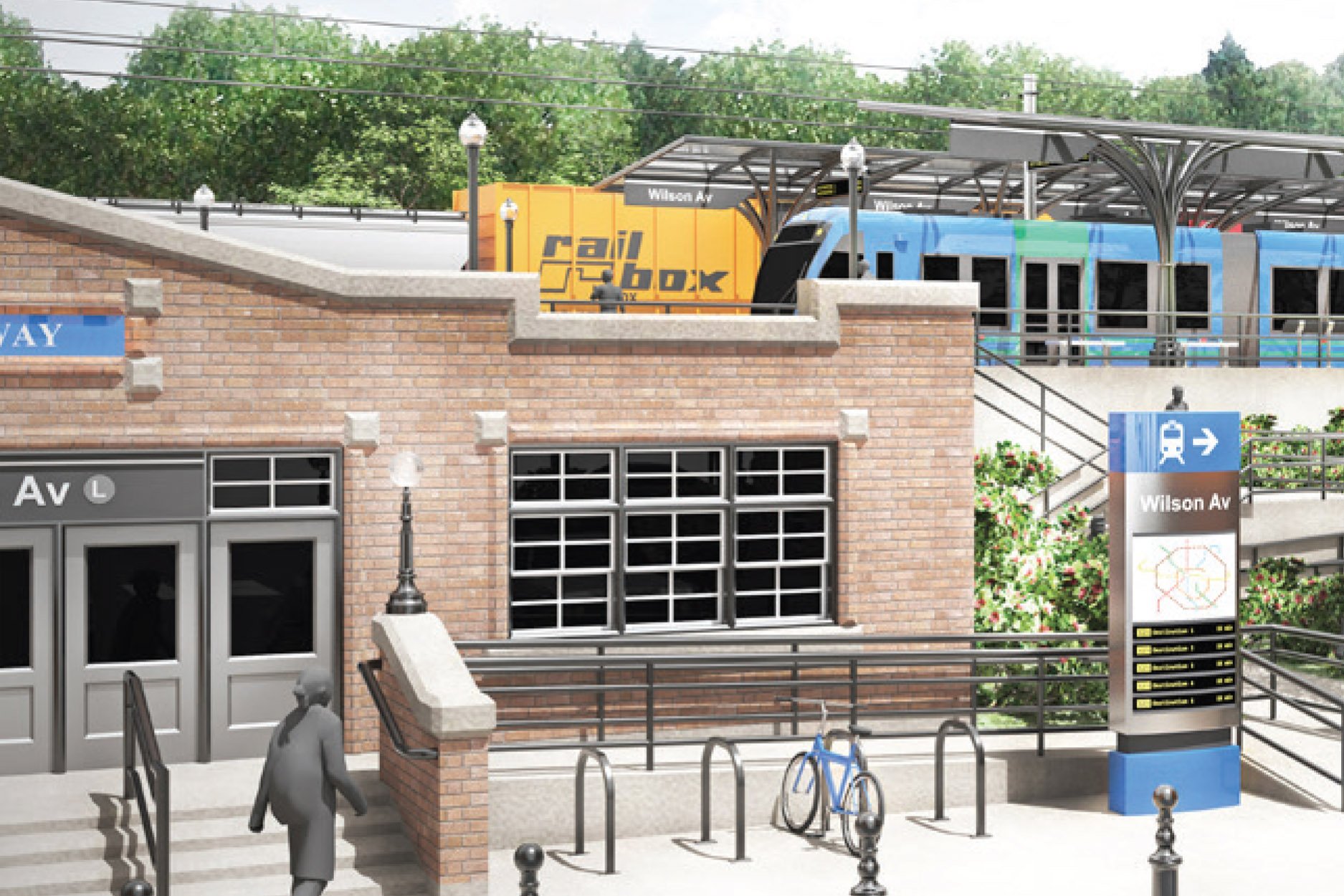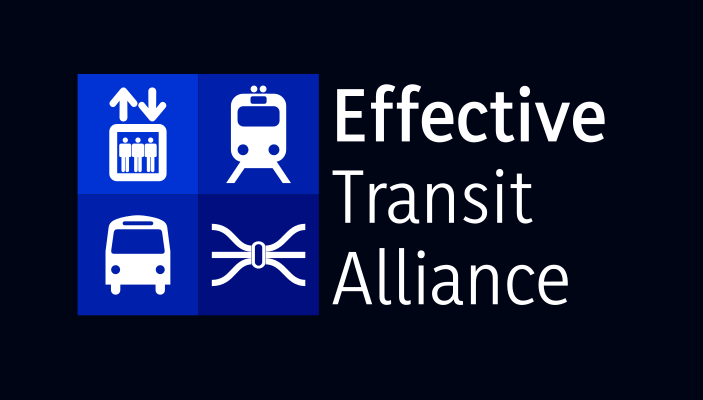
Interborough Express Done Right
Introduction
In early 2022, Governor Kathy Hochul announced her support for the creation of the Interborough Express—a new passenger rail link connecting Brooklyn and Queens—and directed the MTA to begin the planning process. The project, first proposed by the Regional Plan Association in 1996, would run along the path of the existing Bay Ridge Branch, a lightly-used freight line that currently carries only a few trains per day. Approximately 900,000 people live within half a mile of the proposed route, an area which also includes some 260,000 jobs and some 129,000 entirely contained daily commutes. As such, the Interborough Express, if completed, promises to be a transformative project, massively improving travel times between Brooklyn and Queens.
The success of the Interborough project, however, will largely be determined by the details of its implementation. Unfortunately, several of the design decisions presented in the MTA’s official Interborough Express feasibility study seem to contradict long-established best practices. Because the majority of trips along the route will be short, high frequency is of the utmost importance. We at the Effective Transit Alliance believe that similar lines in other cities point to an optimal solution for the Interborough Express, one which will not only offer high-frequency service for outer-borough trips, but will also allow freight volumes on the corridor to grow.
The case for Interborough
Today, a significant percentage of riders looking to travel between Brooklyn and Queens must either travel via Manhattan, or ride local buses along surface streets. As a result, of the 16,000 commutes between Brooklyn and Queens that take place in the half-mile strip around the proposed Interborough, half occur by car. At the same time, only 15 percent of the 85,000 daily commutes made to Manhattan from the study area are completed by car. This demonstrates a strong demand for additional quality, reliable rail transportation between Brooklyn and Queens.
Why not buses?
Even under a scenario of widespread bus lane rollout, the capacity of buses is limited. While a bus driven by a single operator can only carry 50-100 riders, a train controlled by a single operator can easily carry more than 1,000 — greatly reducing operating costs. The Bay Ridge Branch provides a grade-separated right-of-way along an axis that sees high volumes of travel demand. The MTA proposes a service frequency of one train every 6 minutes during peak hours and every 12 minutes at other times.
Conventional rail
The optimal alternative out of the three being studied is the one termed conventional rail. Conventional rail has superior capacity and cost per passenger-mile to light rail and bus and mixes best with freight trains. As such, this alternative would require the least infrastructure modification. Light rail would make for good service, but parts of the right-of-way require trains to run elevated above the freight rail tracks at extra cost, whereas conventional mainline rail can run on the same tracks as freight.
The feasibility study is unfair to the conventional rail option. For example, it asserts that at every stop, light rail trains would have to stop for 30 seconds, but commuter trains would have to stop for 45 seconds. The study is apparently bundling conventional rail as a technology with operating practices that have not been updated for the 21st century. In fact, many conventional rail trains are built for urban service; they are designed to be lightweight, accelerate quickly, and have many doors so that passengers can get on and off quickly. London has the Class 700 on Thameslink and the Class 378 on the Overground, Paris has the MI-79 and MI-84 on the RER, and Munich and several other German cities have the Class 423, all designed to run efficient urban service on mainline track shared with long-distance and freight trains. Before 2018, such equipment was not legal on American tracks, but federal regulations realigned to be substantially the same as in Europe, and so such trains can be bought now.
Light rail has its uses - in places where it is to run on the street for part of the way. This exists across the Hudson, in New Jersey: the Hudson-Bergen Light Rail (HBLR) uses this technology because it runs partly on disused mainline rail track and partly on the streets of the Jersey City waterfront in streetcar mode. If there are no plans to extend service where it would run on city streets, then the best technology is not light rail but heavy rail.
Propulsion
Unlike the feasibility study, we forcefully advocate overhead wire, also known as overhead line equipment (OLE) as the propulsion technology, a technology the Bay Ridge Branch once possessed until it was shortsightedly removed.
Third rail is generally considered to be an inferior technology for newly built rail lines, especially for those carrying freight. The shape of a third rail and its proximity to the ground generally prohibits the transmission of high voltage. While third rails transmit up to 1.5 kV DC, the standard for new OLE is 25 kV AC. For this reason, third rail electrification typically requires more substations per route than modern overhead wire, increasing construction costs. Furthermore, supplying traction power at ground level introduces safety risks for railroad personnel. A freight rail operation of any significant size requires workers at track level to couple and uncouple freight cars, which only amplifies the danger to train crew. Moreover, while the power supplied by a third rail is more than sufficient to power passenger trains, it would likely be insufficient for a locomotive hauling heavy freight trains. This is especially important if an electrified cross-harbor tunnel is to be built. Third-rail locomotives are virtually unknown worldwide on mainline passenger or freight rail.
Although American freight operators sometimes claim that OLE impedes their operation, freight trains routinely run under overhead wire in the United States, and overhead wire-powered locomotives commonly haul freight trains around the world. Electric traction would simplify design and construction of an eventual cross-harbor rail tunnel, as electric locomotives can climb steeper slopes than diesel ones, and they reduce the need for intermediate ventilation plants along tunnels or to operate maintenance-intensive dual mode locomotives. Moreover, overhead line equipment would simplify future extension of the Interborough Express to the Bronx, where the Northeast Corridor is already equipped with catenary wire
Recent decades have seen substantial advancements made in overhead line equipment that must operate with limited clearances. At Cardiff Intersection Bridge in the UK, measures including surge arrestors and insulated paint allowed crews to place OLE supplying 25 kV AC power just 1.5” below the bottom of a steel railway bridge and 3” above the train roof. Moreover, crews have already lowered the track at several overpasses on the Bay Ridge Branch.
Battery propulsion is inappropriate for the Interborough Express. Onboard batteries dramatically increase the weight of railcars, worsening their acceleration. Strategies for zero-emission train services elsewhere in the world prefer expanding OLE over utilizing battery-powered trains, even on secondary routes. Generally, operators reserve battery trains for the lines with the most marginal business case and which travel to the most sparsely populated areas — not for the densest parts of their networks. Norway, which is currently the world capital of battery-electric car adoption, is electrifying commuter rail in Trondheim (a metropolitan region of 500,000) with OLE. In major European and Asian cities, including ones a tenth the size of metro New York, all urban and suburban lines are wired with OLE.
Freight
We believe that the Bay Ridge Branch has substantial potential for freight traffic growth. Fortunately, Governor Hochul seems to have recognized this by explicitly calling for a solution that allows for both passenger and freight rail service. Today, two to four trains service the branch daily, but increased traffic to the Brooklyn Terminal Market and nearby businesses via the trans-harbor carfloat could fill more capacity than those trains can handle. Additional freight via the branch would remove truck traffic from key Hudson and East River crossings.
Interborough Express service would decrease the ability to stage freight trains north of Fresh Pond, where the right-of-way is only wide enough for two tracks. However, overnight hours likely allow sufficient room for traffic growth that does not constrain daytime Interborough operations. Furthermore, in Brooklyn, the right-of-way is wide enough for railcar storage tracks to be constructed if necessary.
Both domestic and international examples suggest that it is not necessary to widen the whole Bay Ridge Branch from two tracks to four. In the United States, the Long Island Rail Road already operates freight trains during overnight hours along its passenger lines. Meanwhile, internationally, passenger trains on the London Overground North London Line share tracks with freight trains. For example, at Hackney Central station, freight trains run directly adjacent to platforms where passenger trains stop. The segment seeing the heaviest freight traffic also sees the heaviest passenger traffic: 9 trains per hour at the peak. Most of the line is electrified with 25 kV AC OLE and with third rail, often concurrently.
Despite reservations expressed by the MTA, the North London Line shows that passenger trains and freight trains can use the same track. The only freight loads that have difficulty coexisting with passenger trains are oversize freight - but oversize freight cannot run in New York due to many clearance restrictions elsewhere; if those restrictions are ever removed in the distant future, shaving the platforms back and running wider passenger trains will not be hard. This is fortunate, because shared track operations would eliminate the most expensive widening of the Bay Ridge Branch right-of-way and several of the envisioned private property acquisitions.
Additionally, the Legislature should reconsider statutes such as NYS Law 51-A, which prescribes minimum clearances on newly built railroads. Many legacy rail lines in New York State and elsewhere do not meet these standards and carry heavy traffic with excellent safety records that surpass those of any highway. Though well-intentioned, Law 51-A and similar statutes likely increase the cost of building or modifying rail infrastructure unnecessarily.
Fares
The MTA must commit to charging Interborough Express riders the same fare as a subway ride, and offer free transfers to the rest of the system. Interborough should serve as a template for fare integration between the whole subway and regional rail network, as well as the operational practices that will facilitate that by reducing operating costs.
Manual fare collection by conductors is inappropriate for the Interborough Express due to the anticipated prevalence of short trips with transfers to the subway. Fare collection should instead be accomplished through subway-style gates or through off-board OMNY readers. The London Overground, which uses a Cubic fare collection system similar to OMNY, has a mix of fare gates at busy, central stations and off-board readers at less busy, outlying stations. Off-board payment can enable free transfers without long passages, allowing major transfer stations like Jackson Heights or Broadway Junction to be built more quickly and cheaply.
